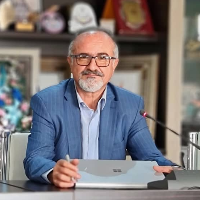A framework for regeneration of historical contexts with culture-led approach to achieve sustainable tourism development (Case study: Urmia historical context)
This study aims to investigate the capacities of the culture-led regeneration components in the historical context of Urmia and present a strategy to enhance the identity and tourism development in this area. This article provides a framework for a culture-led regeneration in the historical context of Urmia with an emphasis on urban tourism. Theoretical literature has mentioned the cultural tourism approach as a reliable catalyst in culture-led regeneration programs. Successful experiences have shown that this approach can be used to boost the local economy while preserving the artistic and cultural heritage. Also, different religions and ethnicities have the potential to provide a special environment. As in the historical review of Bast in Britain, it was concluded that the social role of culture and art in improving cohesion and social interaction plays an important role in preserving the cultural customs and traditions of societies living in the old context.
This study is considered applied research using a descriptive-analytical method. A bibliographic study of documents and field-survey methods have been used by means of questionnaires and observation tools to collect data. According to Cochran’s formula, the statistical population in the historical neighborhoods of Urmia and the size of the statistical sample is equal to 379 people. After explaining the conceptual model of culture-led regeneration, a questionnaire was developed and qualitatively evaluated by Likert evaluation and the Friedman test. The correlation test was statistically analyzed by the data obtained from the questionnaire.
According to the conceptual model and based on the components derived from the literature on culture-led regeneration, the main components of the research can be divided into three categories: design-oriented, creativity-oriented, and community-oriented. According to the results, the most effective urban regeneration components in the study area are 1- community-oriented, 2- creativity-oriented, and 3- design-oriented, respectively. Also, the effectiveness of urban regeneration indicators in the study area can be prioritized as 1- culture, 2- social, 3- physical, 4- participatory management, 5- visual perception, 6- economic, 7- functional, 8- motivational space, and 9- environmental. Also, the correlation test result shows a significant relationship between the perceptual index and managerial and social indicators, with a coefficient of 0.9, 10. With more and more efforts of officials and citizens to preserve the originality and identity of the area and by transferring the values to future generations, more social activities will be observed. The correlation coefficient between the physical and social indexes is equal to 0.15, indicating a relationship between these two indicators. In other words, by creating open spaces, we will increase socialization and social capital. We also see a significant relationship between cultural and environmental indicators with a confidence of 0.99. Suitable social environments can be created by preserving the environment and producing green spaces or complexes with different trees and urban agriculture. Also, garden museums can be created to envisage these two indicators due to a strong historical context. Also, there was a significant relationship between the social and management indexes. Obviously, by informing the residents about the regulations and creating cultural neighborhood centers and recreational environments, more people will be actively present in the neighborhood, which will increase vitality, safety, and security in the community. The results indicate that the historical context of Urmia has a high potential in terms of the social development of cultural tourism, including cultural resources, events, and historical sites. Still, at the same time, as Chiardi and Hanigan believe, the deterioration of the context, separation from urban centers, and the existence of abandoned and defenseless spaces, are the obstacles to developing this type of tourism that slow down the regeneration process.
Providing Three main paths are proposed as strategic goals to achieve the desired regeneration:• Creating identifying, memorable, and green historical complexes (design-oriented).• Creating participatory and competitive spaces based on creative industries (creativity-oriented).• Providing development based on participation, creating interactive spaces representing residents’ culture (community-based).According to the results, historical contexts in Iran, including the historical context of Urmia, offer unique opportunities in terms of physical and architectural attractions and cultural diversity due to the existence of different religions, ethnicities, and traditions. However, the biggest obstacles to using their potential are severe shortages of tourism infrastructure and limited transient visions of urban managers. Therefore, it seems that the framework for tourism development in historical contexts is to offer long-term and step-by-step programs without hasty decisions, provide infrastructure, and change the short-term visions of urban management. Accordingly, four steps are presented to better achieve the desired goals in culture-led regeneration since the common processes are inefficient for tourism development and mobilizing culture-led regeneration programs. A coherent, pragmatic, step-by-step program should be designed and implemented on the basis of the local culture and art and the involvement of residents. At the same time, preserving the memory and identity of the original values of the context should not be overlooked.
- حق عضویت دریافتی صرف حمایت از نشریات عضو و نگهداری، تکمیل و توسعه مگیران میشود.
- پرداخت حق اشتراک و دانلود مقالات اجازه بازنشر آن در سایر رسانههای چاپی و دیجیتال را به کاربر نمیدهد.


